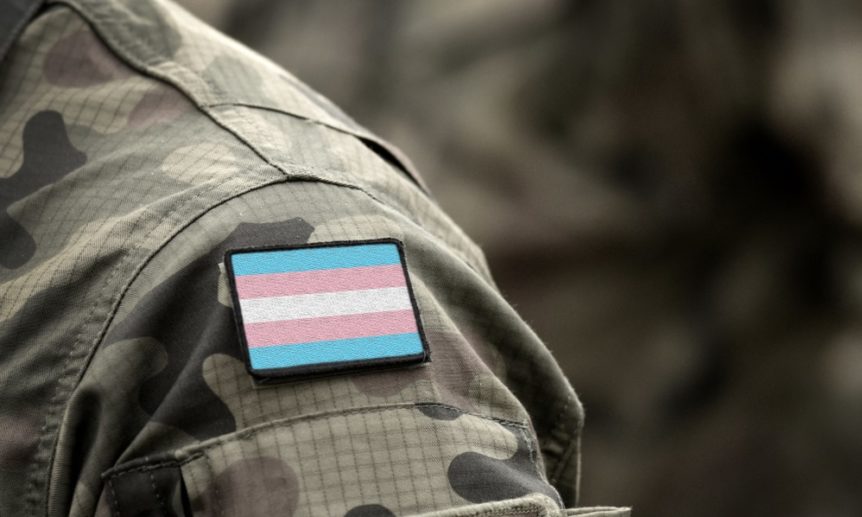In April 2019, President Trump signed an order banning transgender people from joining the military. The controversial policy not only barred transgender troops from serving in the nation’s defense forces; it also blocked the use of Department of Defense (DOD) and Department of Homeland Security (DHS) resources to fund surgical procedures related to sex reassignment.
Fast-forward to January 2021, when President Biden signed a new executive order to lift the previously instituted transgender military ban. What does the new presidential directive mean going forward? Can transgender people join the military? Here’s everything you need to know.
Transgender Military Ban
Trump’s 2019 directive came a year after revoking the blanket ban he had previously instituted. He stated in a memorandum that after consulting widely, he would defer to the recommendations of James Mattis, the then Secretary of Defense.
Mattis stated that individuals diagnosed with gender dysphoria – a condition in which they feel that their psychological and emotional identity is different from their biological gender – would not be eligible for military service unless in specific special circumstances.
The White House memo read that military personnel who have been diagnosed with the condition or have a history of gender dysphoria (especially those who would require considerable medical treatment) presented a substantial risk to the “lethality and effectiveness” of the military.
The sweeping ban affected approximately 1,320 to 6,630 active-duty troops and 830 to 4,160 reserve duty personnel who identify as transgender. That’s how many transgender serve in the military. Some advocacy groups project that number to be as high as 15,000.
In an earlier statement, Trump backed his decision citing the tremendous transgender cost to military resources. He stated that the military could not be burdened with the disruption and expenses of accommodating transgender troops. A study by Rand Corp. estimated that troops seeking transition-related healthcare cost the DOD approximately $2.4 million to $8.4 million every year.
The 2019 DOD Transgender Military Policy
Following President’s Trump directive, the DOD released a policy addressing military service among people with gender dysphoria. Below are its key highlights.
1. All Persons Must Meet the Military Standards Associated With Their Gender at Birth
The 2019 policy defined a transgender person as an individual who identifies as a gender that’s different from their biological sex. It stated that while the DOD did not exclude transgender individuals from military service, every person – transgender or not – was required to meet all military enlistment standards, including those associated with their gender at birth. Any waiver or exception to those standards would only be given on a case-by-case basis.
2. Transgender Personnel Already Serving in the Military May Continue to Do So
Any individual who joined the military as a transgender person, or was diagnosed with gender dysphoria before the transgender military ban took effect, was exempt from the new policy.
Transgender military members who were already serving honorably – whether in their biological sex or preferred gender – would not be dismissed or separated from active duty. The DOD policy prohibited involuntary separation from service on the basis of an individual’s gender identity.
3. All Individuals Wishing to Join the Military Must Meet All Military Standards Without Special Accommodations
Any person with gender dysphoria, who had been treated for the condition through various procedures such as sex reassignment surgery or cross-sex hormone therapy, and as such was unable or unwilling to meet the military standards associated with their biological gender, would be dismissed from service.
For instance, a transgender woman born a man would have to meet the military standards associated with male recruitment and training during service. If they were unable to meet and maintain those standards, they would be presumptively dismissed.
4. Gender Dysphoria Is a Medical Condition
The policy defined gender dysphoria as a “serious medical condition” that causes significant clinical distress and impairment in occupational, social, and other critical areas of functioning. In some individuals, the condition can be alleviated through counseling, while in others, the only course of treatment is gender transition.
According to the 2019 policy, these individuals would require special accommodations outside the normal military standards and, as such, were not eligible to join.
5. Special Accommodations Accorded to Individuals With Gender Dysphoria and Not to Others Were Removed
The previous 2016 DOD policy instituted during the Obama administration allowed persons with gender dysphoria who underwent sex reassignment surgery or hormone therapy to join the military in their gender of choice without a waiver. This was on the condition that they were stable for at least 18 months prior to their enlistment.
On the other hand, other non-transgender individuals diagnosed with conditions such as low testosterone could not enlist for service, even with hormone therapy. The 2019 policy eliminated this disparity by barring individuals who had undergone sex reassignment surgery or received hormone therapy for any reason from joining the military.
Transgender Military Ban Lifted

While the policy’s constitutionality was challenged several times, the Supreme Court issued a 5-4 ruling in Trump v. Stockman and Trump v. Karnoski, allowing the directive to stand until the lower courts had finalized all pending litigation on the matter.
The new military policy received widespread criticism from several factions and members of the LGBTQ community, including retired transgender navy seal Kristin Beck. Beck, who fought in Afghanistan and Iraq, received the highly coveted Meritorious Service Medal, the Purple Heart, and the Bronze Star.
In the 2021 executive order, President Biden repealed the controversial transgender military policy, stating that military personnel would not be subjected to the possibility of being discharged from service or undergoing separation of duty based on their gender identity.
The new presidential directive:
- Lifts the 2019 Trump-instituted ban that barred transgender people from serving in the military
- Prohibits the discharge or denial of reenlistment of troops on the basis of their gender identity
- Rectifies the records of individuals who were dismissed from service because of their gender identity from dishonorable to honorable
- Issues a directive to the DHS Secretary and DOD Secretary to provide a detailed brief on the progress of implementation within 60 days of signing the new order
Far From the Finish Line
Although many welcomed the new Biden order, some factions argue that more needs to be done to protect the rights of members of the LGBTQ community. Unless Congress enacts new legislation, there’s no telling whether the next administration will overturn the newly instituted policy.
Are you currently dealing with a legal issue? Chat online with a Laws101 attorney right now.
